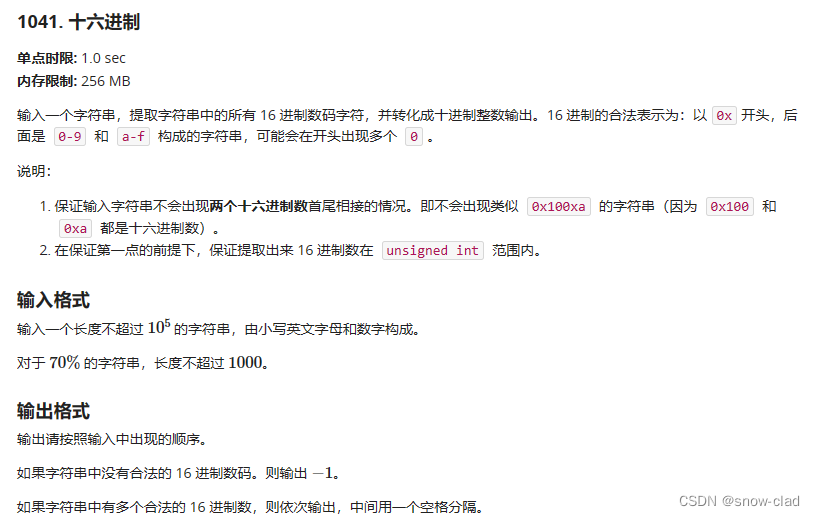"Programming Thinking and Practice" 1041. Hexadecimal
topic


train of thought
Since the first digits of two hexadecimal numbers will not meet, you can directly determine whether there is a hexadecimal number by finding the position where 0x appears:
1. Use the strstr function to find the position of the first 0x;
2. After finding the position of 0x, start traversing from 0x, and judge whether the next digit is between 0 to 9 or a to f, and if it is not, you need to terminate the traversal;
3. After terminating the traversal, judge whether there is a legal hexadecimal number, and output it directly;
4. Iterate for the next round of search (repeatedly search until 0x does not appear later);
5. You need to use a variable to access the total statistical hexadecimal number, but when it is 0, you need to output -1;
Points to note:
Hexadecimal numbers are in the range of unsigned int.
the code
#include<stdio.h>
#include<string.h>
int count=0; //记录合法数字个数
void solve(char *temp)
{
unsigned int num=0;
int flag=0; //判断是否有十六进制的数字
for(int i=0;i<strlen(temp);i++)
{
if(temp[i]>='0'&&temp[i]<='9')
{
num=num*16+temp[i]-'0';
flag=1;
}
else if(temp[i]>='a'&&temp[i]<='f')
{
num=num*16+temp[i]+10-'a';
flag=1;
}
else
{
break; //非合法数字直接终止循环
}
}
if(flag) //有合法数字
{
count++;
printf("%u ",num);
}
temp=strstr(temp+2,"0x")==NULL?NULL:strstr(temp+2,"0x")+2; //下一轮寻找
if(temp!=NULL)
{
solve(temp); //迭代
}
}
int main()
{
char s[100001];
scanf("%s",s);
char* temp=strstr(s,"0x")==NULL?NULL:strstr(s,"0x")+2; //存搜索0x得到的地址(+2表示从0x后开始)
solve(temp);
if(count==0)
{
printf("-1\n");
}
return 0;
}